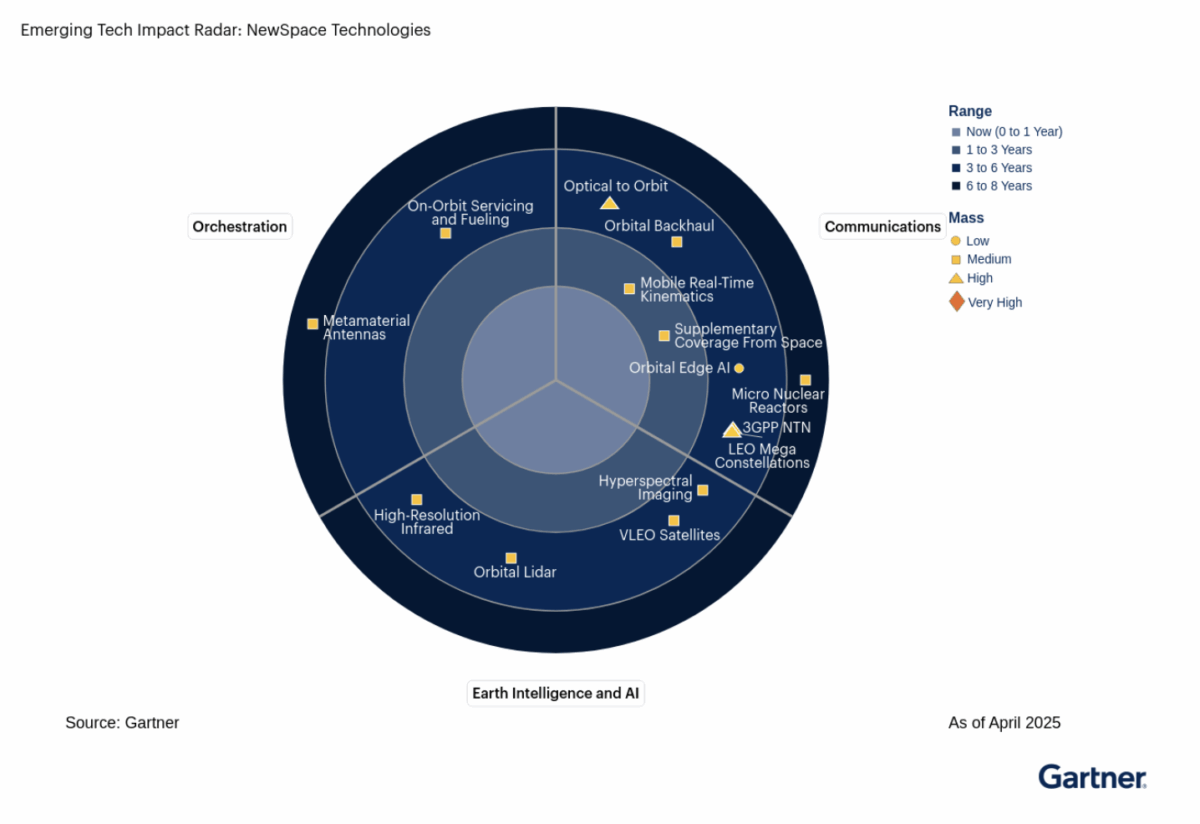
Miratlas confie ses données à PhoceaDC
18 April 2025
Miratlas releases “Lamarck” its Atmospheric Dataset
4 June 2025—April 2024 — In a recent analysis on Emerging Tech Impact Radar: NewSpace Technologies, Miratlas has been highlighted as a leading innovator in Optical to Orbit, the rapidly evolving field of high-capacity ground-to-orbit and aircraft-to-orbit communications. The report underscores the transformative potential of optical technologies, which are poised to redefine satellite communications, Earth observation, Quantum Key Distribution, Optical data relay and telecommunications.
According to the analysis by Peter Kjeldsen, optical to orbit solutions are gaining traction due to their ability to deliver significantly higher bandwidth compared to traditional microwave systems. This advancement is critical as the satellite and Earth observation industries face growing data congestion, driven by the proliferation of high-resolution imagery, hyperspectral data, and other advanced observational technologies.
Why Optical to Orbit Matters
The report emphasizes that optical to orbit systems address a critical bottleneck in orbital operations: the limitation of shared radio frequency bands. By leveraging optical technologies, operators can bypass these constraints, enabling faster, more reliable data transmission. Key benefits include:
- Scalability: Multiwavelength solutions offer a more flexible and future-proof roadmap compared to microwave systems.
- Orbital Backhaul: When combined with laser-mesh networks, optical to orbit reduces atmospheric interference, improving data reliability.
- Cost Efficiency: Enhanced bandwidth reduces the need for costly orbital processing, making data retrieval from low-value observations (e.g., open-sea photography) economically viable.
Miratlas at the Forefront
Miratlas is one of the sample vendors cited in the Gartner report, reflecting its role in advancing optical to orbit technologies. As the industry transitions toward commercial deployment within the next three to six years, Miratlas is positioned to play a pivotal role in enabling this shift.
Gartner’s Key Takeaways
- Market Potential: The optical to orbit sector is expected to grow as demand for high-speed, low-latency data transmission increases.
- Challenges: Cloud cover and atmospheric conditions remain hurdles, but innovations in laser-mesh networks are mitigating these risks.
- Strategic Recommendations: Gartner advises stakeholders to prioritize partnerships with vendors like Miratlas to stay ahead of the curve.
Action Steps for Industry Players
Gartner’s report outlines actionable strategies for organizations looking to capitalize on optical to orbit:
- Future-proof orbital operations by ensuring sufficient terrestrial (fiber) data capacity to locations which will provide high reliability for optical to orbit (such as cloud-free locations at altitude).
- Gain early access to increased orbital capacity by partnering with ground station as-a-service providers that have a published roadmap for integrating optical to orbit
Looking Ahead
As Gartner notes in its Top CSP Technology Trends for 2024: Scaling New Technology for Growth, the shift to optical to orbit is not just a trend but a necessity for the next generation of space and data systems. Miratlas remains committed to driving this transformation, ensuring seamless connectivity and unlocking new possibilities in the ever-expanding satellite ecosystem.
For more information on Gartner’s analysis, visit Gartner’s official resources.
This release is based on insights from Gartner’s Optical to Orbit report. For detailed findings, refer to the original publication.
Emerging Tech Impact Radar: NewSpace Technologies



